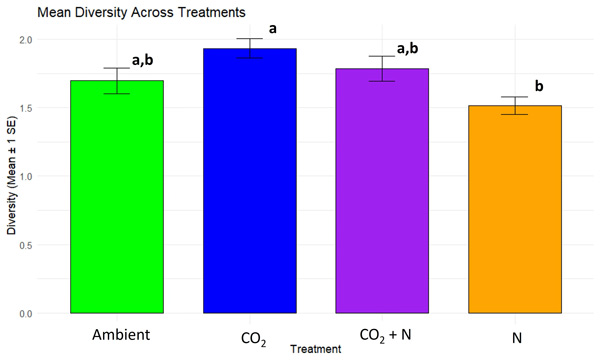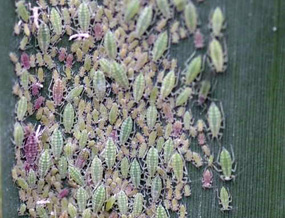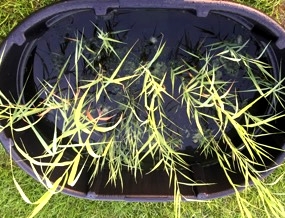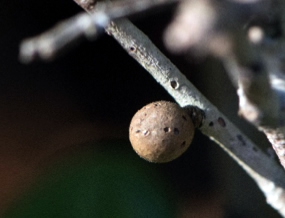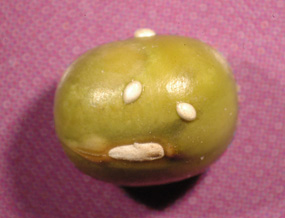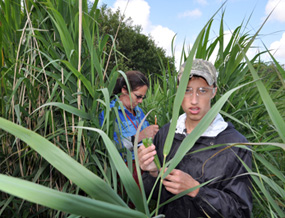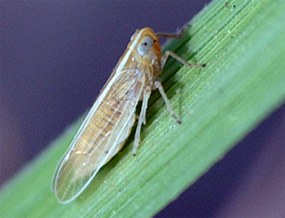Roseau cane (Phragmites australis) Dieback
in the Mississippi River Delta
Phragmites volatile organic compounds (VOCs) and their effect on multi-trophic interactions
With Andrea Glassmire as lead investigator, we have been collecting VOCs from Phragmites under various environmental and experimental conditions. VOCs are collected using portable devices that we created in which oven bags are placed over a portion of the plant and the volatiles are collected using a filter trap and vacuum pump (Fig. 1).
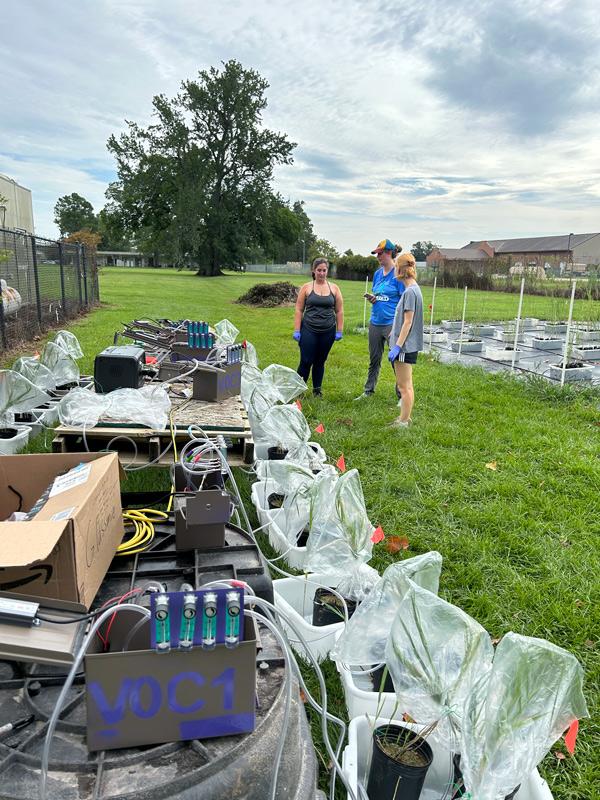
In most of the previously described experiments, we have collected VOCs. This includes collecting VOCs from all Phragmites source populations in the common garden at LSU, open-top chambers at SERC and our transcriptomic experiment. Andrea has identified approximately 60 total VOCs, 29 of which are known compounds and many of those compounds have been reported to be attractants or deterrents to herbivores and their natural enemies.
In the SERC study, we found significant differences in VOC composition among experimental treatments. Pairwise differences were evident between the +N and +N+CO2 treatments (Fig. 2) and between the ambient and +N treatments.

Interestingly, the elevated CO2 treatment had the highest VOC diversity among treatment and was significantly higher than the diversity for the elevated N treatment (Fig. 3).
